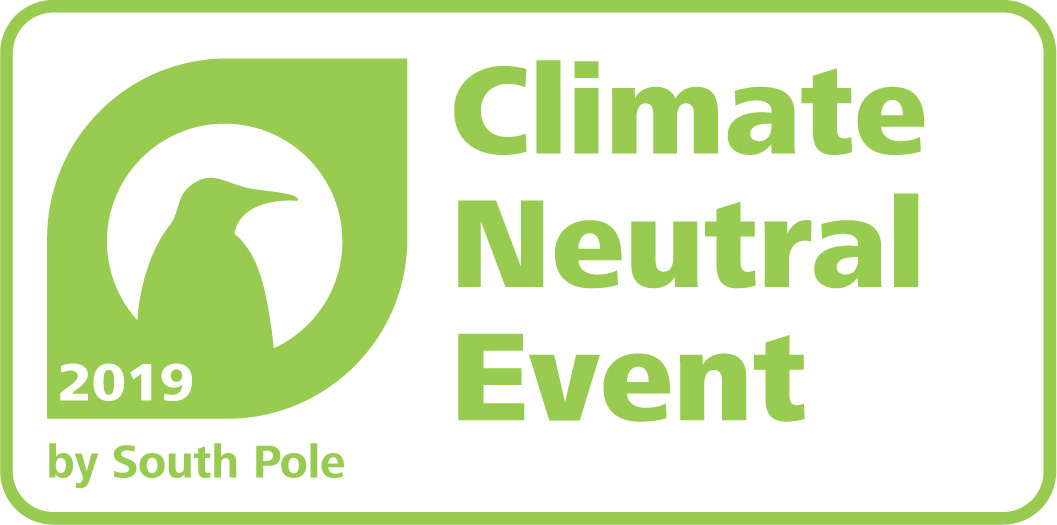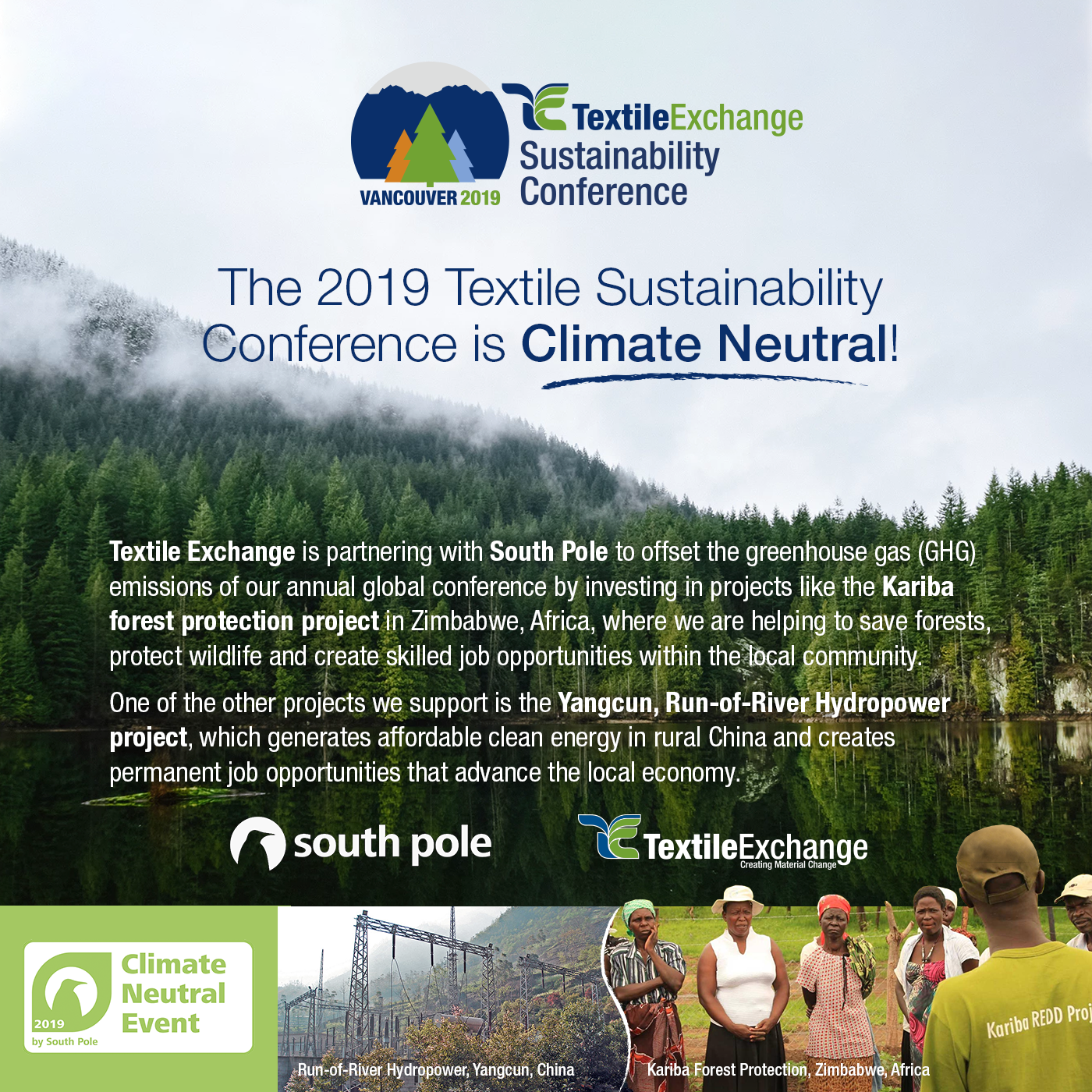
Climate Neutrality
 In a world where more and more businesses are committing to reducing their impact and building a more sustainable future, the next crucial step is going from talk to action. The 2019 Textile Sustainability Conference convenes change-makers from around the world to shape a better tomorrow. We are excited to share that for the first time ever, the Textile Sustainability Conference is climate neutral!
In a world where more and more businesses are committing to reducing their impact and building a more sustainable future, the next crucial step is going from talk to action. The 2019 Textile Sustainability Conference convenes change-makers from around the world to shape a better tomorrow. We are excited to share that for the first time ever, the Textile Sustainability Conference is climate neutral!
We partnered with South Pole to calculate the greenhouse gas (GHG) footprint of our upcoming conference and offset our impact by investing in projects like the Kariba forest protection project in Zimbabwe, where Textile Exchange is helping to save forests, protect wildlife and create skilled job opportunities within the local community. One of the other projects we support is the Yangcun, Run-of- River Hydropower project, which generates affordable clean energy in rural China and creates permanent job opportunities that advance the local economy.
The estimated offset amount equals over 500 Olympic swimming pools of carbon dioxide gas. This estimation will be updated after the conference when we have the final numbers of attendees.
As advocates for the United Nation Sustainable Development Goals, we will continue to lead by example and collaborate with organizations that are tackling climate change.
What is Climate Neutrality? Climate neutrality has been an established concept since the beginning of this century, and the phrase "carbon neutral" was word of the year in 2006. By contrast to "carbon neutral”, which is carbon specific, "climate neutrality" covers all greenhouse gases (GHGs) as defined by the Kyoto Protocol. It combines an organization’s need to account for their greenhouse gas footprint and establish a clear reduction strategy, before offsetting unavoidable emissions. The purpose is to reduce net climate impact to zero - which is why recently the term "net zero" is becoming increasingly popular.
How does climate neutrality work for the Textile Sustainability Conference? An event such as Textile Exchange's Textile Sustainability Conference can be responsible for significant greenhouse gas emissions. That is why we have partnered with South Pole, a leading sustainability consultant, to become climate neutral. With South Pole, we first quantified all data that relates to the GHG footprint of the event, from planning and marketing to its execution. This includes emissions from transport and accommodation for both organizers and attendees but also energy and food consumption. There is also a reduction strategy in place that includes using Renewable Energy Certificates from a North American wind farm and powering the event with 100% renewable energy. By compensating the unavoidable emissions with high quality emission reduction projects under internationally recognized standards, we not only ensure that the emissions created by our event are compensated, but that positive impacts contributing to the UN Sustainable Development Goals are continually supported in developing countries.
